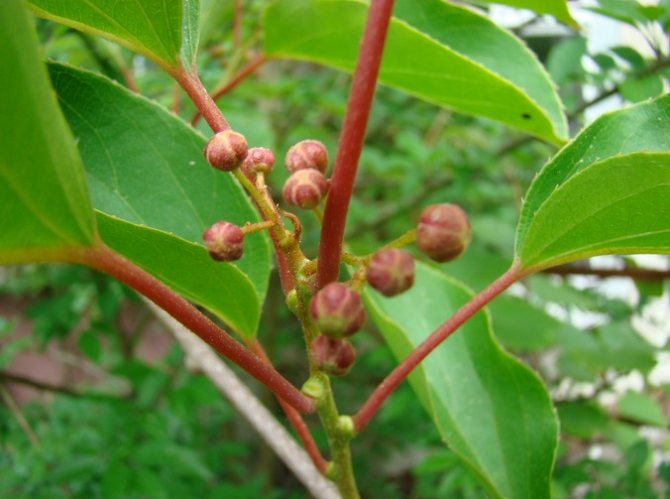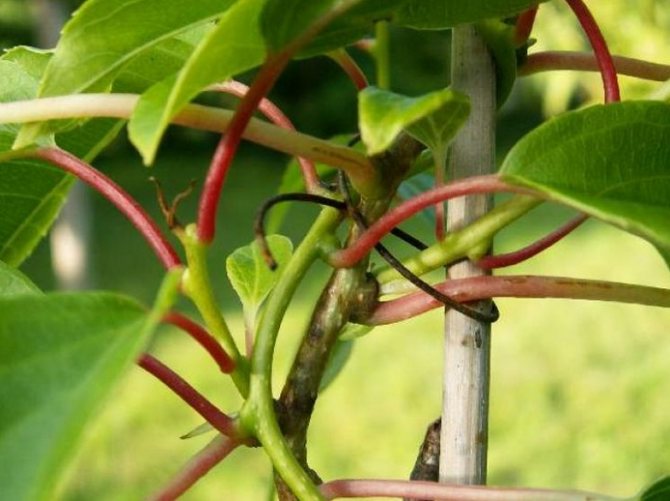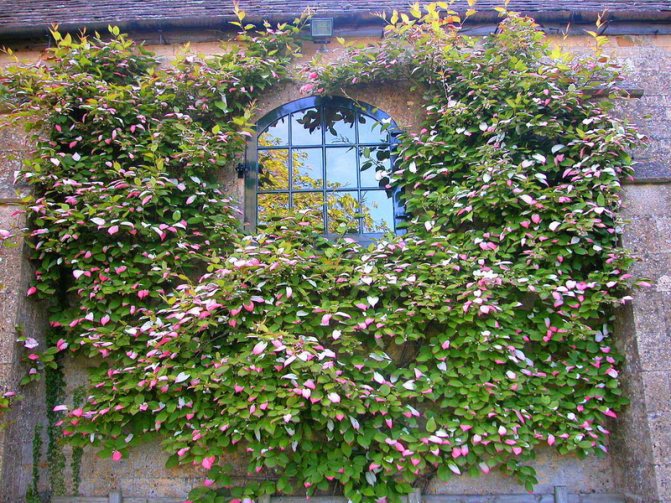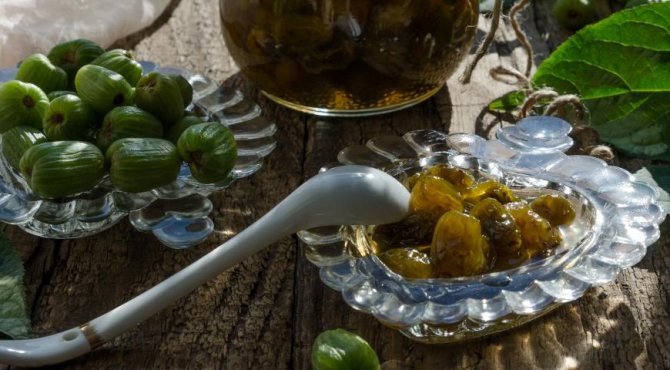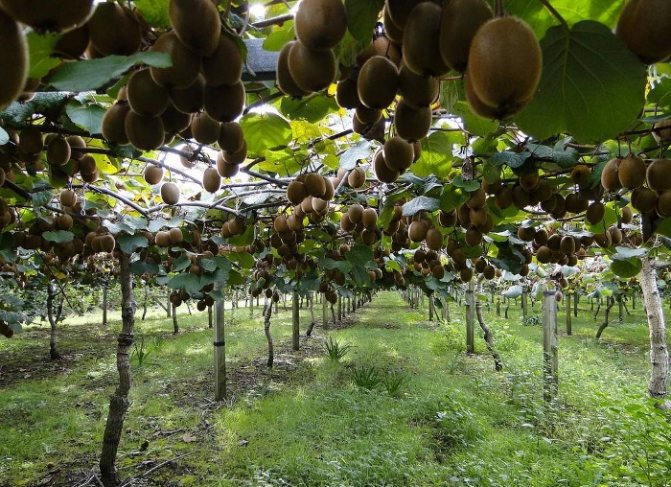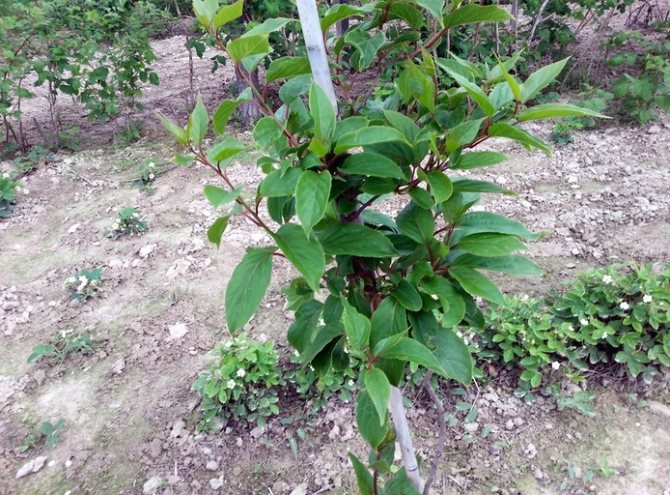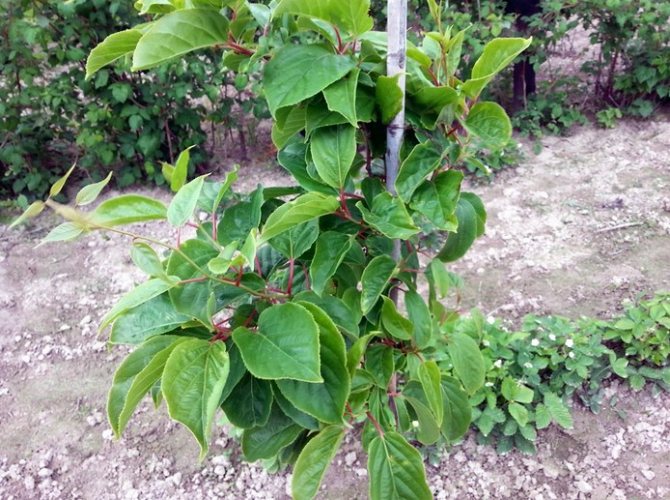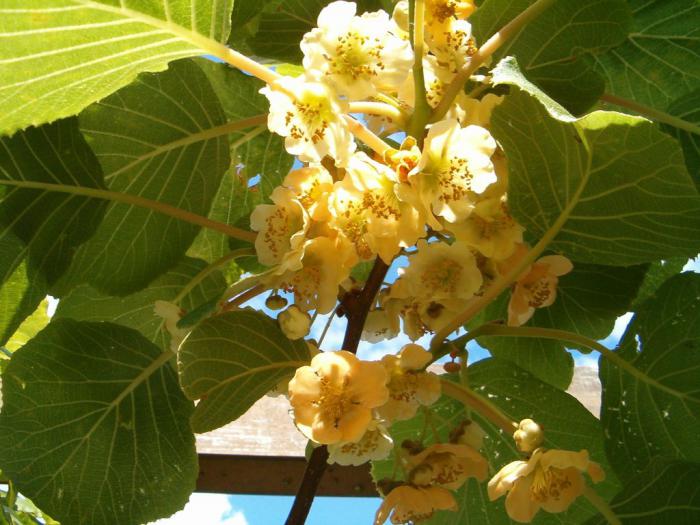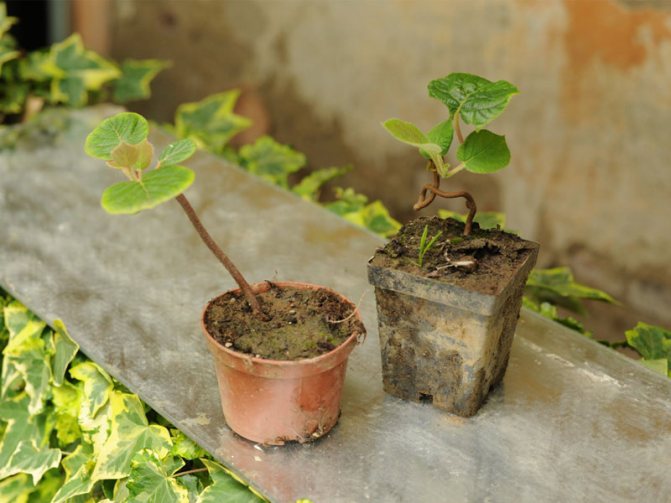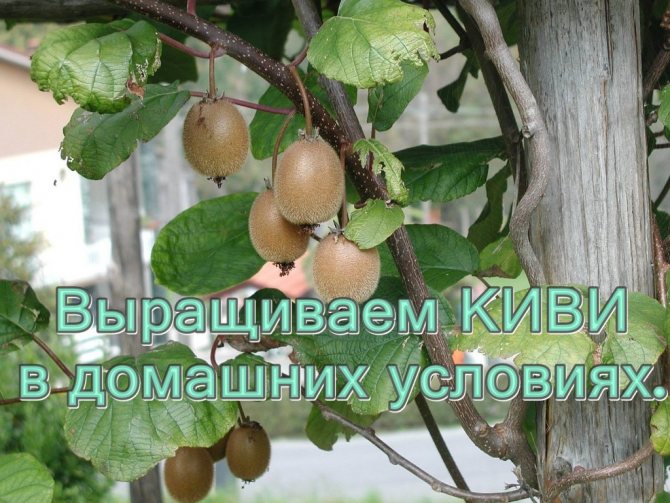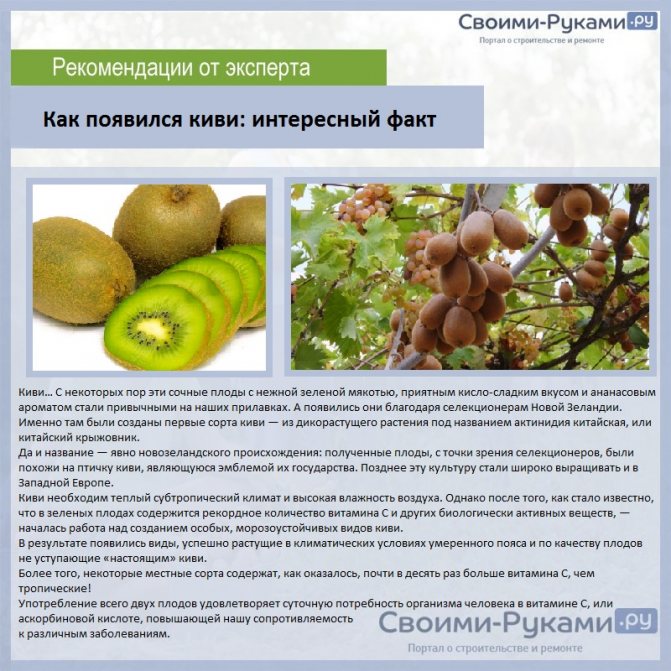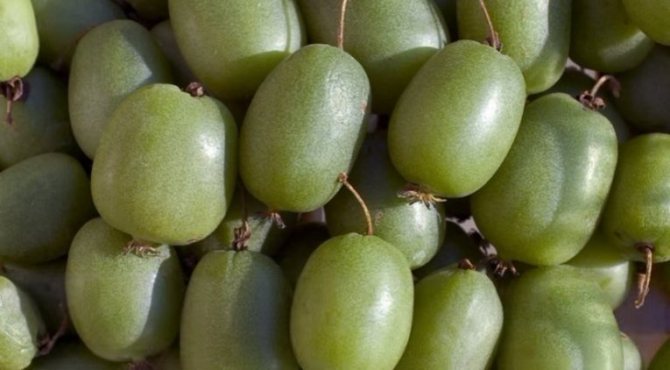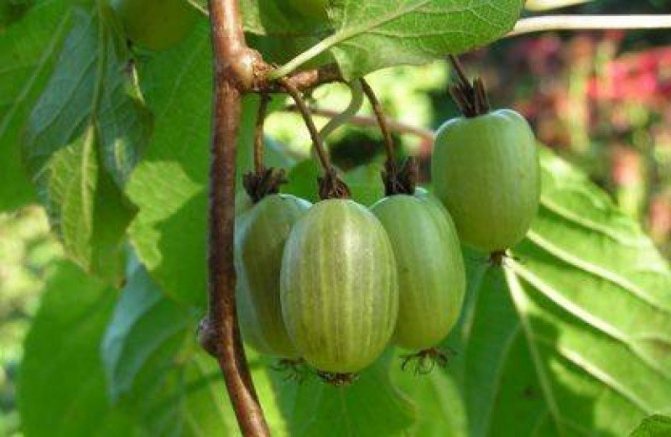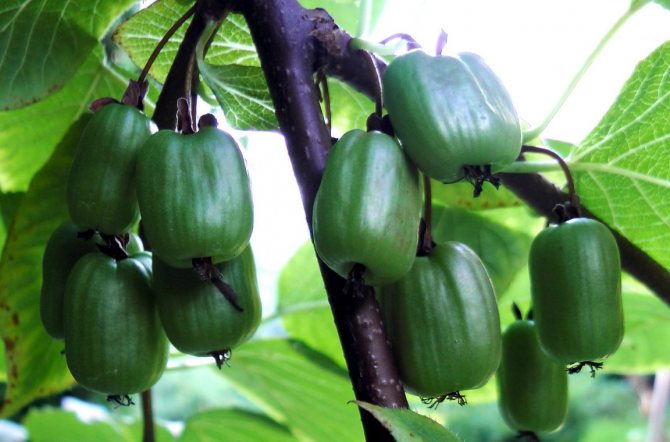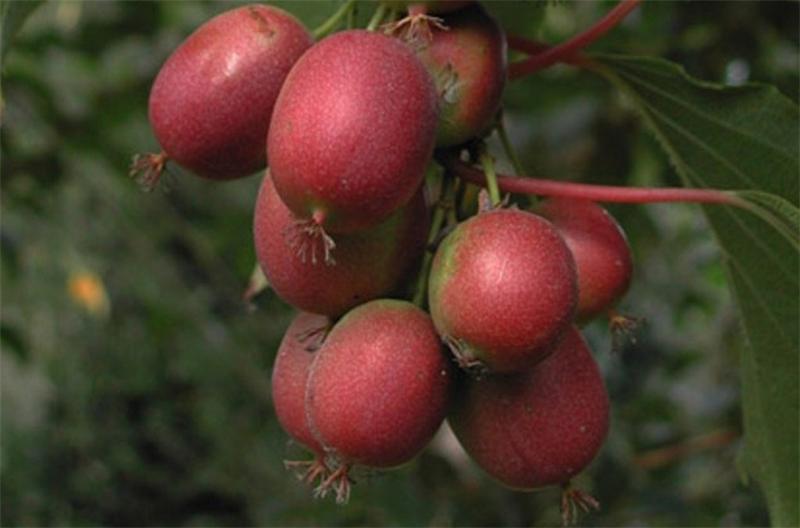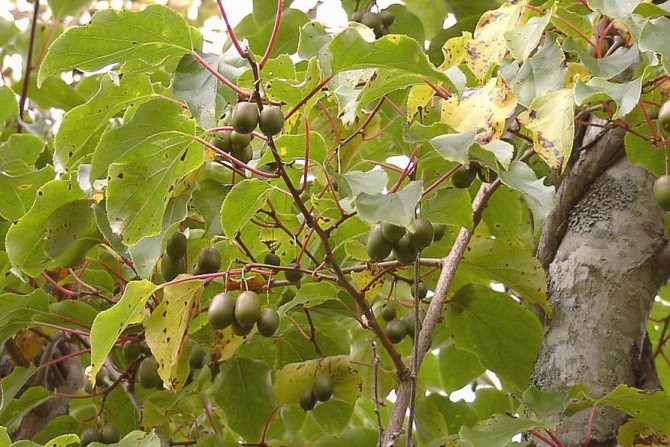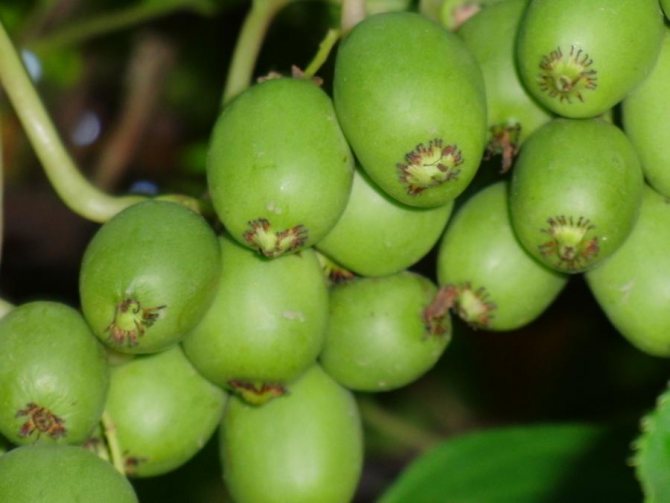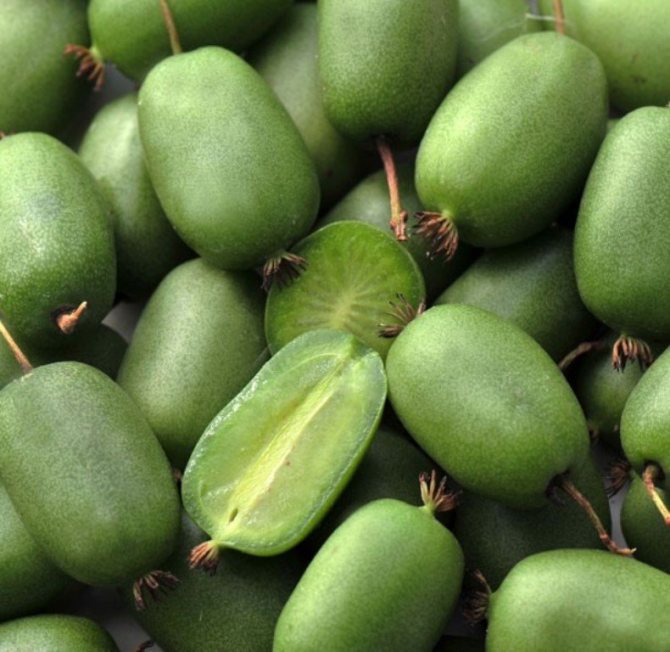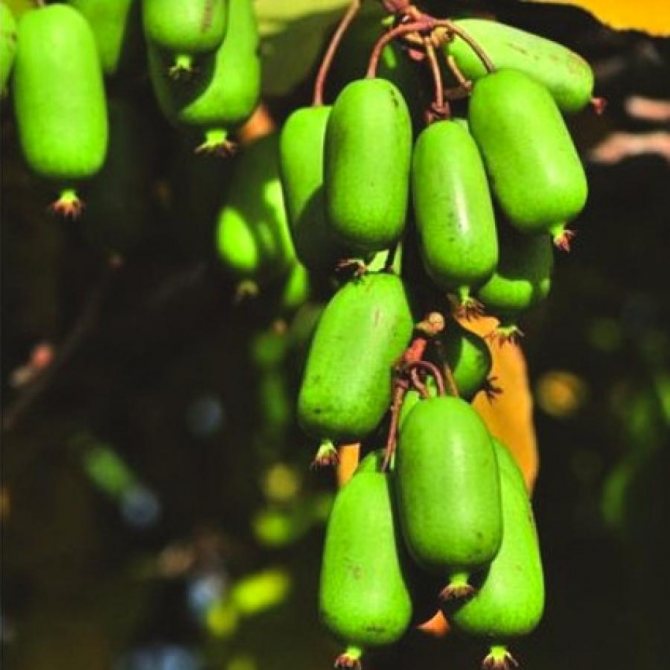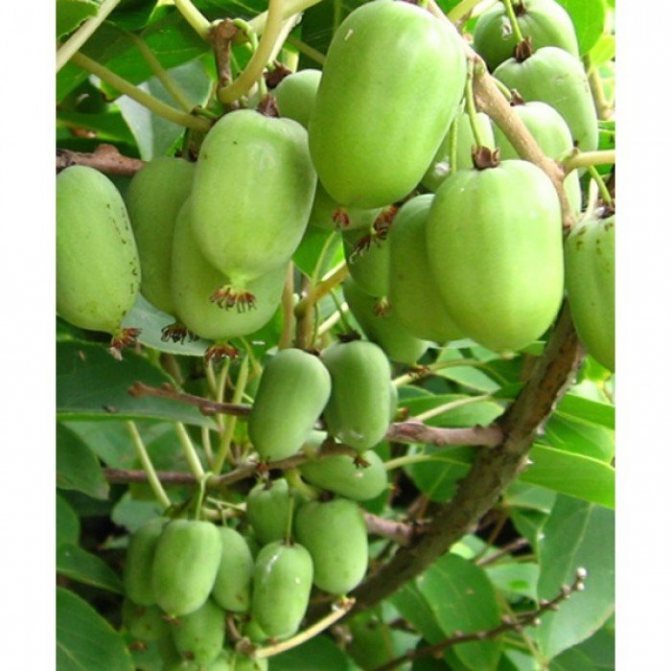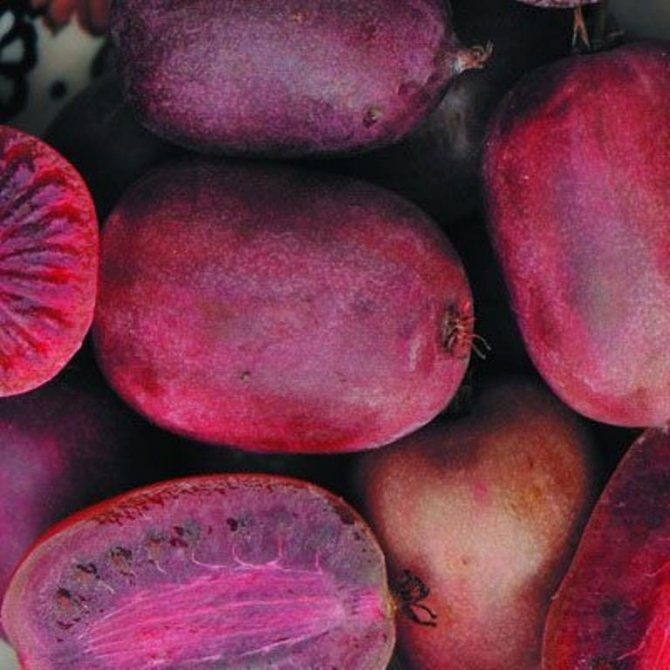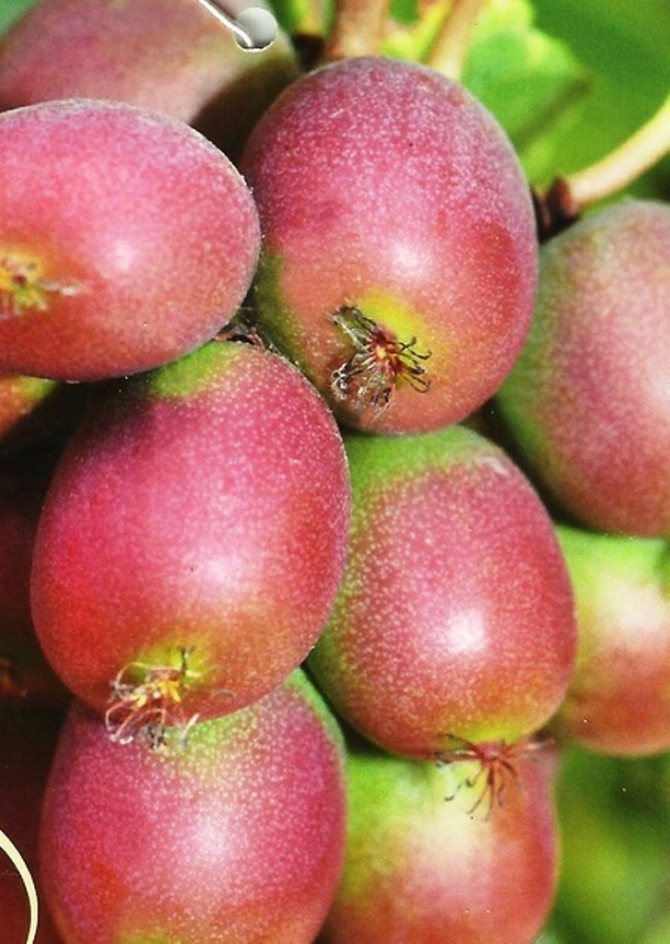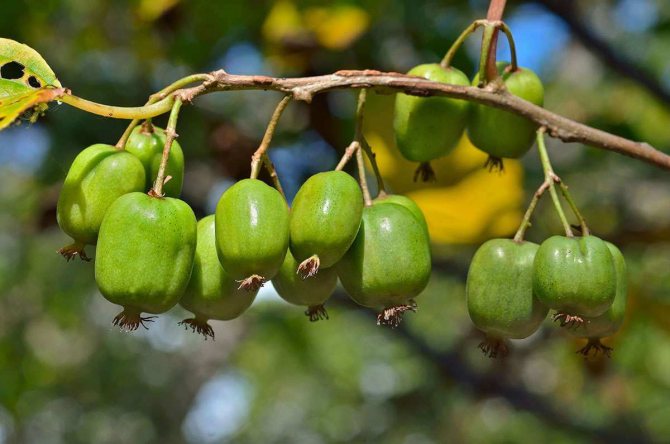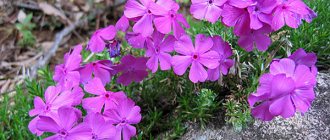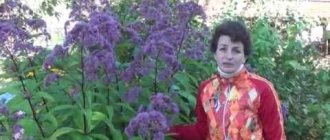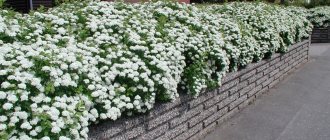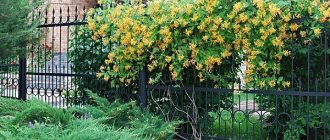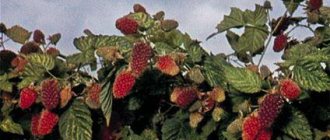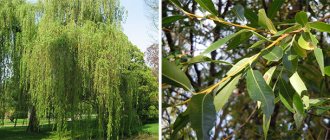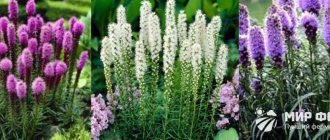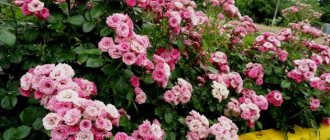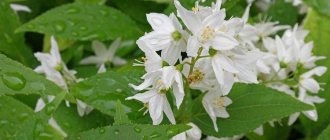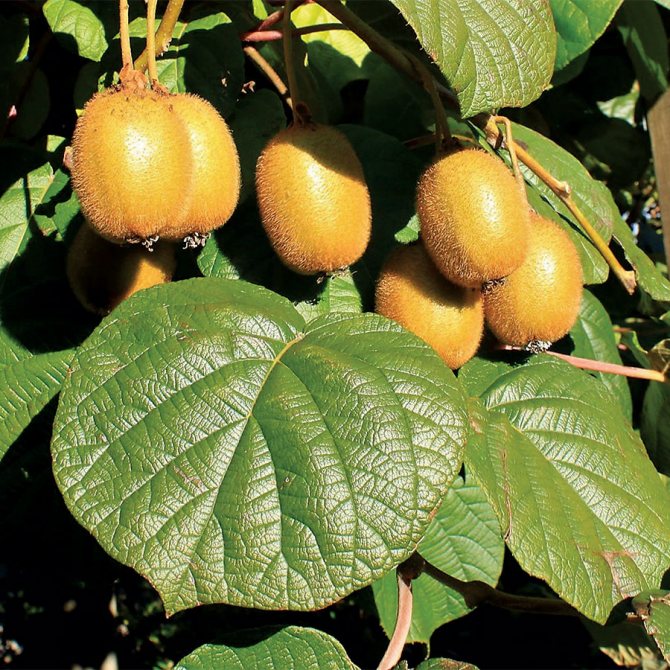
- 13 October, 2018
- Trees and shrubs
- Ekaterina Komisarova
Actinidia (planting and care in the Moscow region will be discussed in this article) is a representative of the tree-like vines family, whose historical homeland is China. In the wild, it is widespread in Southeast Asia, the Far East and the Himalayas, however, due to its attractive appearance and excellent decorativeness, the plant is used almost all over the world, including in our country, in landscape design. These vines were brought to Europe in 1958. They quickly became very popular, because, in addition to attractiveness, they have incredibly tasty and healthy fruits that are well known to us as kiwi.
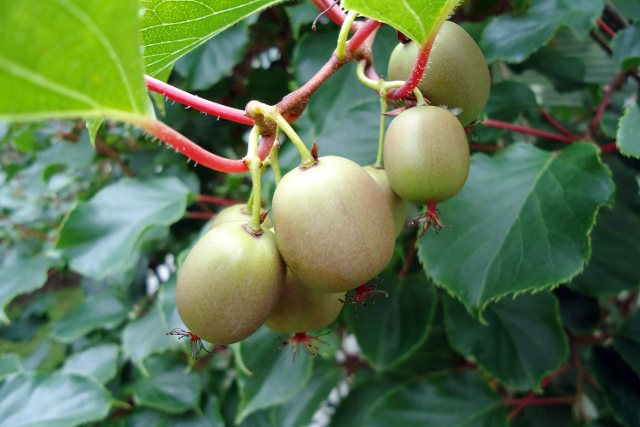

The plant adapts well to any climatic conditions and grows on various types of soil, so many people think about cultivating it. However, since Russia is known for its harsh winters, certain nuances must be taken into account when growing. Which ones will be discussed in detail later in this article.
general information
Actinidia (planting and caring for this crop in the Moscow region is not too laborious, but there are certain features) are perennial deciduous vines. They reach a great length, so they need special supports along which the plant will curl and crawl upwards. The leaves can be both smooth and leathery, have an average size and variegated color, which gives the culture a special decorative effect. During the active growing season, small flowers appear in the axillary lateral buds, which can have a white, orange or golden hue. In some species, they exude a very pleasant sweetish aroma.
Actinidia fruits have excellent taste and many beneficial properties. They are a good source of glucose, ascorbic acid and other active substances that our body needs. They can be consumed both fresh and used to prepare various dishes and desserts. They are also used to make jam and make some types of wine. It is thanks to all this that many domestic gardeners are thinking about breeding actinidia. Planting and caring for this plant in the Moscow region does not require significant physical and financial costs, so even beginners can cope with everything.
Basic requirements for growing
So, the growing process is not difficult, but you will have to show accuracy, care and patience.
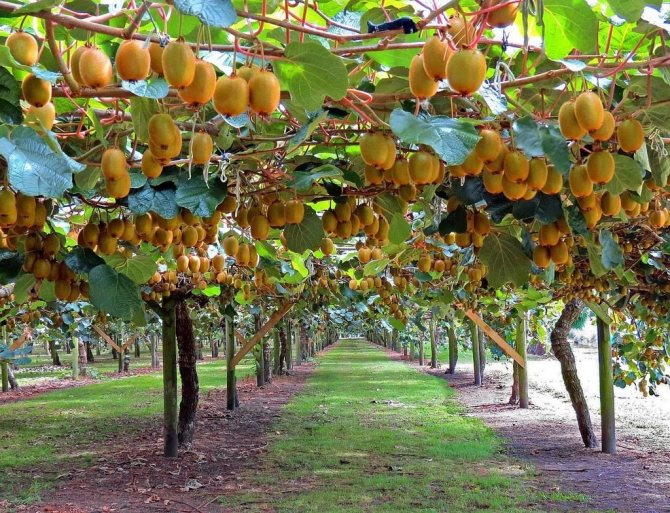

How kiwi is grown
You can grow kiwi:
- cuttings;
- seeds;
- accessory buds of the roots.
All methods have their own nuances, advantages and disadvantages, which we will get acquainted with a little later. However, there are a number of general rules that apply to kiwi breeding.
Kiwi is a distant relative of grapes, and therefore uses a similar cultivation technology here. The described culture is warm and light-requiring, therefore it must be located in a well-lit place (preferably without drafts). It should be remembered that the direct rays of the sun can lead to burns of foliage, therefore, the light should fall from the side.An even better option is vertically directed artificial lighting.
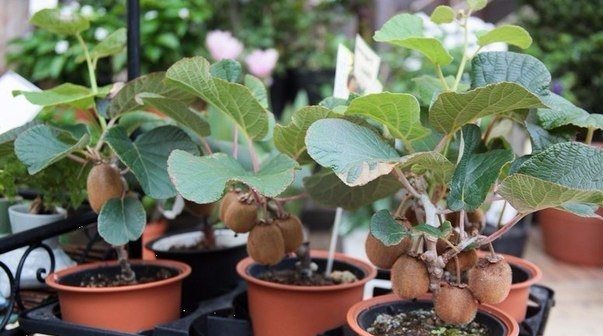

In the process of development, the pots should be periodically scrolled clockwise (every two weeks, 10-15 °). This will provide the plants with a straight silhouette, and the crown will turn out to be dense and uniform.
Note! There are many varieties of kiwi, but, characteristically, almost all of them are suitable for growing at home.
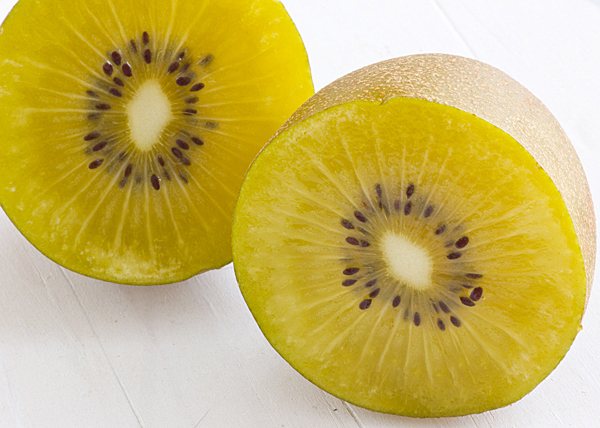

It should also be remembered that kiwi is a dioecious crop, and therefore one male and at least two or three female plants are required for normal fruiting. If kiwi is grown from seed, then about 80 percent of the seedlings are male, so there should be as many of them as possible.
Now let's look directly at the workflow.
Useful properties of fruits
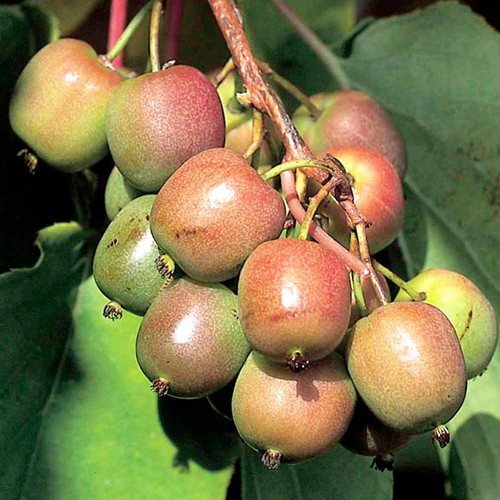

Actinidia of the Kolomikta variety for the Moscow region is of great value, since its fruits have many useful properties.
They help with the following problems:
- belching;
- heartburn;
- disorders of the functioning of the digestive system;
- anemia;
- rheumatism;
- back pain;
- gonorrhea;
- inflammation of the colon mucosa.
Kiwi contains a large amount of water, vitamin C, pectin fiber and other useful substances, so they have long been used to prepare various decoctions, infusions and ointments. In addition, these days, some medications are made on the basis of these fruits, which are used to treat many diseases of the gastrointestinal tract. Also, the plant helps to strengthen the immune system and increase the protective functions of the body, therefore, regularly eating fruit, a person will get sick much less often.
Many people are interested in the question of when actinidia ripens in the Moscow region. If you do everything according to technology, in compliance with the basic rules, then the first crop can be harvested approximately in the fourth year after planting. The berries will be ready to harvest at the end of summer. During this period, they accumulate the greatest amount of nutrients, therefore, they are of great value for human health.
How to properly plant a plant in the ground
The correct choice of a site for actinidia argut is the key to abundant fruiting in the future. This plant does not tolerate direct sunlight, often subject to burns. It is better to place the vine in light partial shade. But the lack of light and heat is also undesirable - it negatively affects the quantity and taste of berries.
Actinidia does not like cold drafts very much, therefore, at some distance from the plant, there should be a natural or artificial barrier covering it from the north.
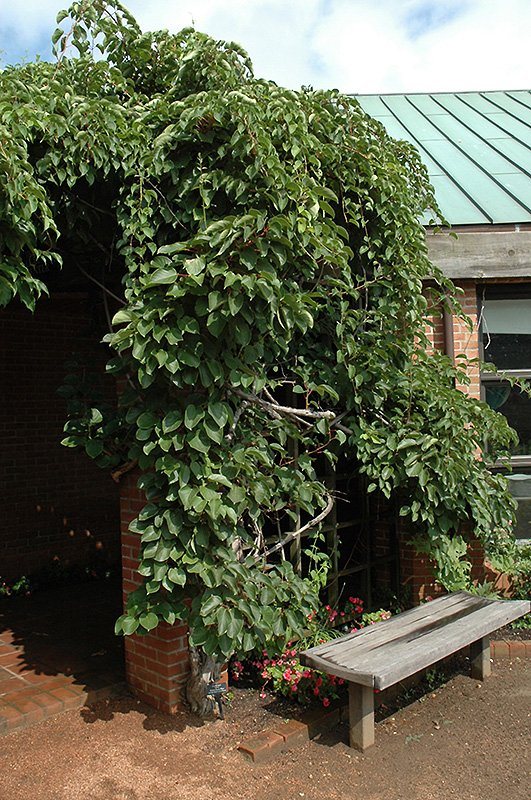

Actinidia arguta does not like the bright sun, especially for young plants
The soil prefers loose, rather nutritious, neutral or slightly acidic (pH 5.0–6.5). The best option is loam or sandy loam soil. A heavy silty, clayey, peat substrate, as well as places where groundwater is located closer than a meter from the earth's surface, is categorically not suitable.
You can plant a crop both in spring and autumn. It depends on the climate in a particular region. The first option is optimal for areas with a temperate climate, where the weather is unpredictable, and winter rarely comes in accordance with the calendar. The best time is the beginning of May, before the active sap flow begins... Autumn planting is suitable for warm subtropics. At the same time, you need to be sure that at least two months are left before the first frost.
Two-year-old seedlings take root best of all. You need to purchase them only in specialized stores or nurseries, and not at agricultural fairs, and even more so not from hands. This is a guarantee of the quality of the planting material. It is desirable that the nursery is located in the same region.In this case, the planting material is already adapted to local climatic and weather conditions.
When making a purchase, give preference to a seedling with a closed root system. The roots of the plant are very fragile. Five minutes outdoors is enough to seriously damage them.
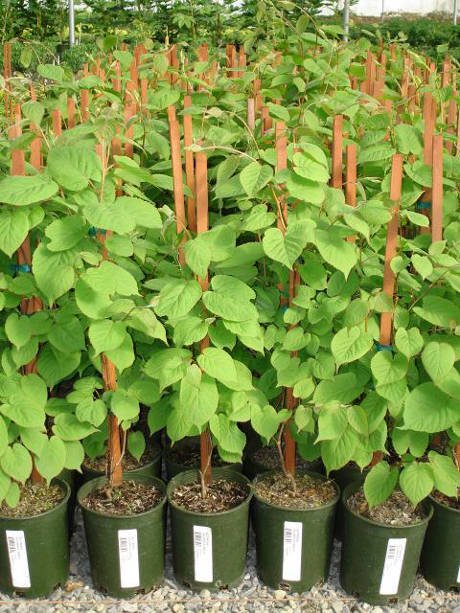

Seedlings of actinidia arguta with a closed root system are guaranteed to survive transportation
The optimum depth of the planting pit for actinidia arguta is 65–70 cm with a diameter of 50–60 cm. When several plants are simultaneously planted, at least two to three meters are left between them, unless the formation of a hedge is planned. In this case, the interval is reduced to 0.5 m. In advance, it is necessary to provide a place for the trellis, arch, and other support. If you start building it after planting, there is a risk of injury to the roots of the plant.
The landing pit is prepared 15–20 days before the intended landing. At the bottom, a drainage layer with a thickness of at least 10–12 cm is required. You can use expanded clay, pebbles, ceramic shards, brick chips and so on. The fertile turf extracted from the pit is mixed with humus (20 l), simple superphosphate (150–180 g) and potassium sulfate (50–70 g). Mineral fertilizers can be replaced with wood ash (1.5 l). Any products containing chlorine are categorically excluded.
The plant also does not like lime, it is not used to normalize the acid-base balance.
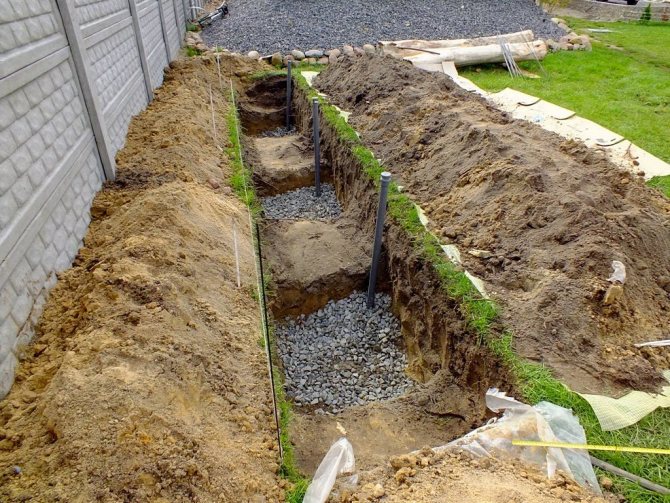

At the bottom of the planting pit for actinidia arguta, a thick layer of drainage is required
There is nothing difficult in the landing itself. The procedure looks like this:
- 30-40 minutes before planting, the container with actinidia is soaked in water at room temperature so that it completely covers the soil. You can add potassium permanganate to it to a pale pink color or any biostimulant. The first is needed for disinfection, the second - to strengthen the plant's immunity.
- Actinidia is removed from the pot, trying to destroy the earthen lump as little as possible. A small depression is made in the mound at the bottom of the planting pit and the plant is placed in it.
- The pit is carefully covered with small portions of soil. So much substrate is needed so that the edge of the pit is flush with the ground. The hole is not formed. This contributes to the stagnation of water, which actinidia arguta really does not like. The root collar should be 1–2 cm above the soil level.
- The seedling is watered, consuming 7-10 liters of water. When it is absorbed, the trunk circle, approximately the same diameter as the planting pit, is covered with peat, humus, sawdust, and freshly cut grass. Alternatively, you can tighten it with an air-permeable covering material. It is important that the roots of the plant are constantly in the shade for the first month and a half.
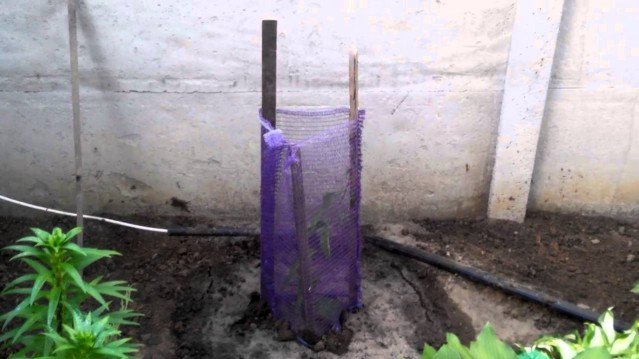

It is advisable to protect newly planted actinidia from the sun, this applies to both roots and leaves
The worst neighbor for actinidia is the apple tree... In general, she does not really like fruit-bearing trees and can even "strangle" them. It is placed next to currant bushes. Any legumes that loosen the soil and saturate it with nitrogen are also useful. Actinidia arguta looks spectacular surrounded by bright annual flowers - marigolds, viols, asters, gerberas, petunias. They are not "competitors" for her, sucking nutrients from the soil.
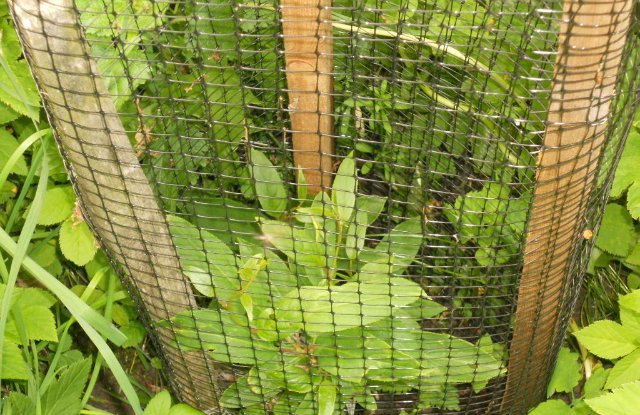

Actinidia argut planted in the ground must be surrounded by a net or create another obstacle that protects it from cats
Video: how to plant actinidia correctly
Male and female liana
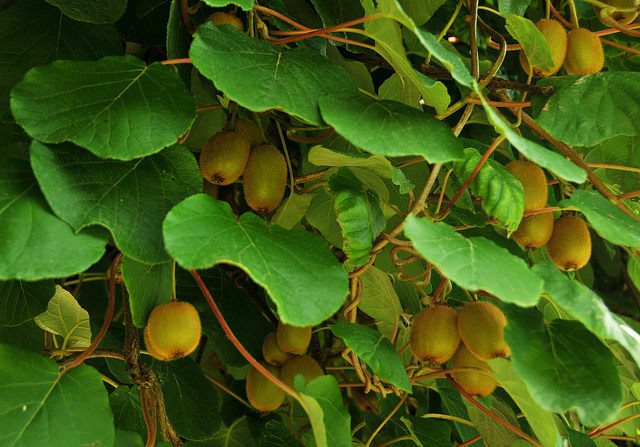

Actinidia (planting Kolomikta in the Moscow region and caring for it or for another variety we will consider a little later) is a representative of dioecious plants, so if you decide to start breeding it, then this should definitely be taken into account. Male and female vines differ in appearance and some other features. The former have more stamens, and the pistil is absent, while the latter have the opposite.Plants reproduce with the help of pollen, which is carried by insects and the wind.
You can also distinguish male actinidia from female actinidia by inflorescences. In the former, they are formed by three flowers, and in the latter, on the shoots, the buds are located one by one. In addition, the petals of male vines by the beginning of autumn begin to acquire a reddish tint, so it is simply impossible to confuse them.
Diseases and pests
As a rule, harmful insects do not deign actinidia with their attention. The main danger for her is represented by cats, which can seriously damage the shoots and roots of the plant, trying to get to the juice.
The plant also rarely suffers from diseases. Basically, various types of rot, mold, provoked by frequent waterlogging of the soil, can develop. To combat them, Bordeaux liquid, copper sulfate and other fungicides are used.
Video: Tips for Growing Healthy Actinidia
Breeding features
To grow a beautiful and healthy vine, every novice gardener should know the intricacies of planting actinidia in the Moscow region and caring for it. Breeding kiwi at home is not too difficult.
The plant can reproduce in the following ways:
- layering;
- cuttings;
- seeds.
Each method has certain characteristics, and also has its own advantages and disadvantages that need to be considered. Further, each of them will be considered in detail so that you can choose the most optimal option for yourself in terms of the complexity of the technological process.
Landing site preparation
Actinidia, on average, is able to bear fruit in one place for half a century. Plants of both sexes must be planted on the site, due to the fact that actinidia is a dioecious plant that requires cross-pollination. Usually 1 male is planted on 5 female plants. Trellis type for actinidia vine - grape rack.
Within the middle strip, actinidia is planted in a place protected from the wind, on the southern side of a residential building. Adequate soil moisture must be maintained. In hot weather, the plant is sprayed twice a day.
Important! Planting actinidia near trees is unacceptable, as this will lead to dehydration of the soil.
Reproduction by layering
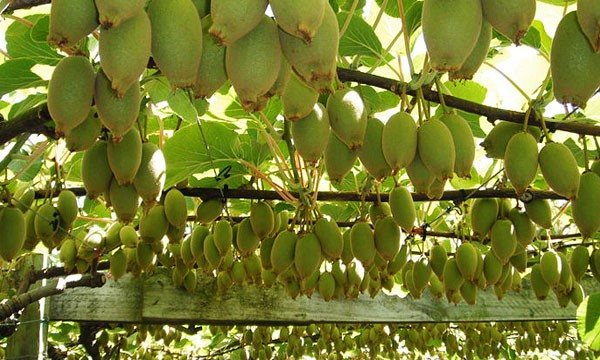

According to gardeners, the procedures for planting actinidia in the Moscow region (and care) in autumn and spring are practically the same. Most often, the plant is bred vegetatively. It differs from others in its simplicity and efficiency. It does not require any special knowledge of gardening, so even beginners will not have any special problems with it. As practice shows, the plant begins to actively bloom and bear fruit already 3-4 years after planting.
This technique is based on the following algorithm:
- At the end of spring, when leaves are formed on the shoots, you need to select the well-developed and strongest vine.
- Make a small incision on it, tilt it towards the ground and sprinkle it with earth. In this case, the soil layer should be at least 10-15 centimeters.
- Cover the mound with a layer of mulch. To do this, you can use sawdust and humus.
- Water the substrate regularly to keep it dry. This will significantly speed up the formation of young roots.
- The young offshoot will be ready for transplanting in early autumn or, as a last resort, next spring.
It is best to plant a young plant on open ground in mid-September, so that it can normally take root in a new place and form a well-developed root system. Suitable for growing in the suburbs and the Kolomikta variety. But if he does not have time to adapt, he may not survive the winter and will simply die from severe frosts, which are not uncommon for this region.
Pruning in the fall
The peculiarity of pruning actinidia lies in the structure of the vine. The plant consists of 3 types of branches:
- Growth or vegetative. Fruits are not tied on such branches.
- Vegetative-generative. Fruits are formed only at the top and bottom of the branch.
- Generative. Lateral shoots, on which the bulk of the fruit is formed.
When determining which species the shoot belongs to, one must take into account the fact that the vine forms fruits only on the branches of the flow year.
Read also Kalanchoe tincture on vodka application of what heals
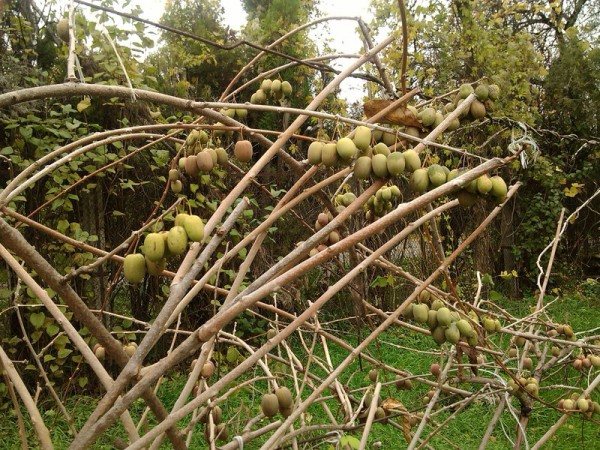

Why crop
As the cold weather approaches, gardeners are thinking about the advisability of removing branches. Due to ignorance of the intricacies of growing actinidia, many summer residents do not prune the plant, which has a very detrimental effect on the vine.
Pruning should be done in order to:
- prevent excessive crown density;
- increase disease resistance;
- to intensify the growth of new branches;
- to increase the volume of the crop and its quality;
- give the liana the desired shape.
Judging by the number of positive properties that the autumn pruning of actinidia carries, manipulation is necessary for an exotic plant for further development.
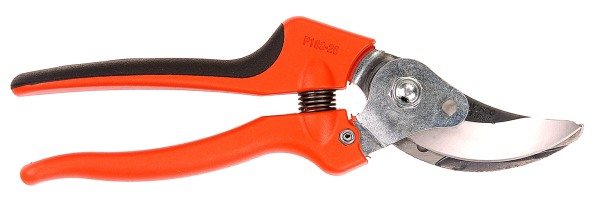

When is the best time to prune - in spring or autumn
The optimal time for pruning actinidia comes in early spring, when the plant has not yet woken up and in late autumn, after the leaves have been shed.
It is impossible to delay with the spring haircut: if you carry out the manipulation in April, when the sap flow began, the plant will secrete juice for a long time at the cut points. Poorly healing wounds can cause the death of the vine.
Pruning dates in the fall
As soon as stable subzero temperatures are established at night, and the vine sheds all the leaves, you can start autumn pruning. Depending on the weather of the climatic zone where actinidia is grown, the branches are removed in October-November.
Important! It is impossible to cut the vine before the specified time - due to the removal of branches, when the sap flow has not yet ended, the plant will expire for a long time with juice, as a result of which it will greatly weaken and die.
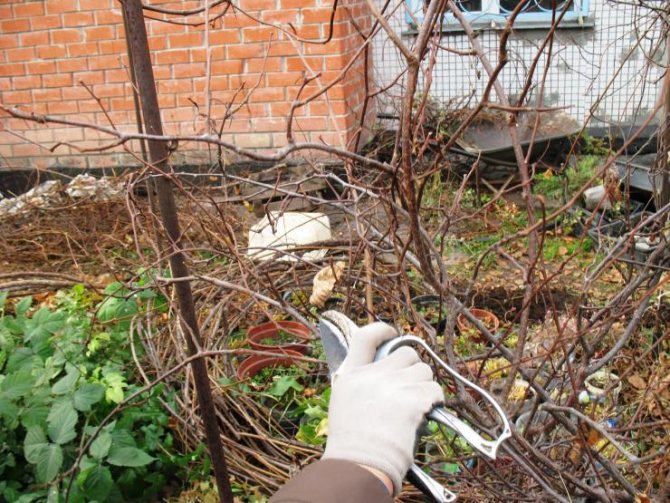

How to properly prune actinidia in the fall - instructions and diagram
Due to the fact that actinidia very quickly grows shoots, in order to prevent a strong thickening of the crown, the vine must be regularly cut off. Correct haircut not only increases immunity to diseases and improves yields, but also makes actinidia more resistant to cold weather, which is very important when growing relatively heat-loving specimens.
The question is controversial, the question is complex, extremely acute in the autumn. How to cover actinidia for the winter - when, how and why: advice from agronomists, experience of farmers and gardeners. Is it worth sheltering the culture, in what regions and in what time frame - everything is about shelter, methods and materials: we borrow experience and ideas.
Cuttings
Another widespread breeding technology of actinidia in the Moscow region. Planting and leaving in this case are not too different from those in other regions of our country. Using this breeding method, you can achieve a good result: the plant will quickly take root in the open field and begin to actively develop. Moreover, this method is very simple and does not require any special, labor-intensive costs.
The technique is based on the following algorithm:
- Planting material is harvested at the beginning of summer. You need to cut a few cuttings from young twigs, about 10-15 centimeters long. Each shoot must have at least two internodes and at least three buds.
- The top cut should be straight and the bottom cut at a 45 degree angle.
- In the lower part of the shoot, the leaves should be removed, and in the upper part, they should be shortened by about half the length.
- Cuttings can be rooted in water, or they can be planted immediately in open ground or in a greenhouse.
- If you immediately decide to place the sprouts in the garden, then they must be covered with gauze, which is moistened several times a day.In the morning and in the evening, young vines should be opened so that they can breathe fresh air, and after 2-3 weeks the fabric is completely removed. During this time, the root system should form and strengthen in actinidia.
- It is recommended to use neutral or not too acidic soil, which is mixed with humus, river sand and complex mineral fertilizers.
- Cuttings should be planted at an angle of approximately 60 degrees. It is necessary to deepen into the ground up to the level of the middle kidney.
- If you live in a region with a cold climate, then for the winter the soil around the plant is covered with fallen leaves.
So, planting actinidia in the Moscow region and caring for it must be carried out in compliance with certain rules. The plant can reproduce not only with green, but also with lignified cuttings. It is recommended to harvest them in the fall. After cutting, the planting material is tied in bundles and stored in a cool room, in which the air temperature is kept constant at a level of 1 to 5 degrees Celsius. In the spring, cuttings can be planted immediately in open ground.
Backfill question: does actinidia need shelter?
Among the species acclimatized in the middle lane, actinidia kolomikta has the greatest frost resistance. Adult plants without shelter are able to withstand a decrease in temperature to -25 ... -27 ° C.
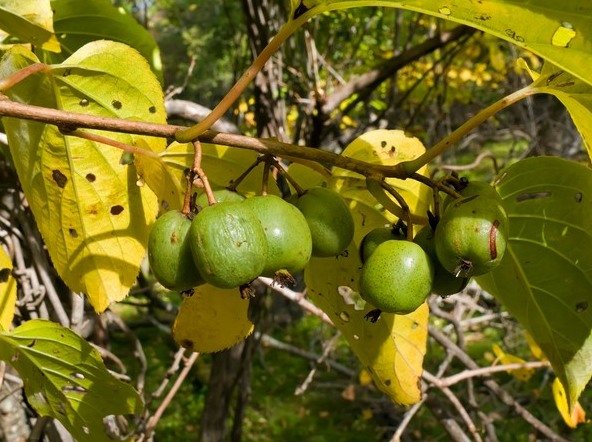

How to shelter actinidia for the winter, and is it worth it: experience in different regions. What to cover - and why.
The rest of the varieties are more thermophilic and require mandatory winter insulation: the same Geneva argument freezes in relatively mild and snowy winters in the center of Ukraine.
Even a slight freezing of the liana negatively affects its ability to bear fruit. The buds that have not matured tops of the shoots freeze slightly.
And also - when freezing, the liana in the spring gives lateral shoots from the lower part of the stem, thereby compensating for the loss of wood.
Seed propagation
Actinidia can be propagated by seed. However, it should be noted right away that this method is one of the most difficult. In addition, the plants will gradually lose the characteristics of the mother vines, so experienced breeders recommend using cuttings or cuttings. However, if you do decide to stick to seed technology, you can still grow actinidia.
The following instructions will help to get high-quality seedlings:
- The seeds are collected from ripe fruits, after which they are placed in gauze, rolled in several layers, and washed under running water. Further, the planting material is evenly laid out on the newspaper and dried.
- At the beginning of December, the seeds are soaked for 4 days, after which they are placed in a dense material and in a container filled with wet sand, they remain in the room at a temperature of about 19 degrees.
- Once a week, the gauze is removed from the box and taken out into the open air for a few minutes. This will temper it and increase the plant's resistance to negative environmental factors.
- Throughout the entire time of germination, the seeds should not be allowed to dry out, since in this case the probability of germination of sprouts is greatly reduced.
- In January, the container is wrapped in a cloth and transferred to the garden, where it must be buried in the snow until spring.
- Around mid-spring, the seeds are again stored in a warm room. Moreover, every day they must be ventilated and humidified.
- After the first shoots appear, the seeds are planted in pots filled with turf soil. When sowing, try to be careful not to break the shoots.
- Every day, the soil should be moistened with a spray bottle, preventing it from drying out. To speed up the germination process, containers can be covered with foil, which will create a greenhouse effect.
- When at least 3 leaves are formed on young shoots, the plants are planted in larger pots.
Vines should be transplanted into open ground no earlier than in the third year after seed germination. As you can see, this method is very time consuming, so it is best to use cuttings or layering.
Care advice
Actinidia is easy to care for. It is necessary to water it in a timely manner, fertilize, loosen the ground, cut it off. The last aspect is the most important. Actinidia Arguta is prone to overgrowth. If the care is competent and comprehensive, the plant will thank you with a bountiful harvest.
Watering
Actinidia should be irrigated abundantly during dry periods, 2-3 times a week. Defend the water beforehand. When the weather is rainy, watering is reduced to 1 time per week.
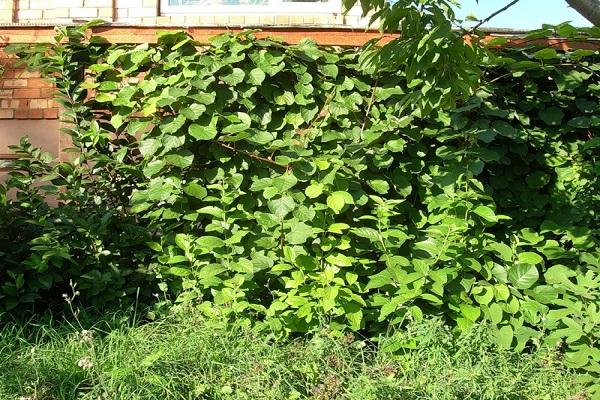

Pruning
Pruning actinidia leads to stimulation of stem growth, awakening of the kidneys. The procedure is carried out with plants 3-4 years old. Prune it during the summer by excising damaged, dry branches. By winter, pluck the tips of the shoots, this will slow down their growth. Rejuvenating pruning involves removing old branches from 10-year-old plants.
You can not shorten the vine in March and September, since it has a strong sap flow.
Trellis
Actinidia needs constant support. It can be a wall, structure, or a special trellis. The design helps to shape the plant into an arch. When growing vines on a building, harvesting will have to be done on the roof.
Top dressing
Fertilize actinidia with mineral fertilizing. This will increase its growth and increase the amount of harvest. In March, add 20 g of potassium and phosphorus, 35 g of nitrogen per 1 square meter of land. After, water the plant abundantly. Repeat the procedure at the end of fruiting and before winter.
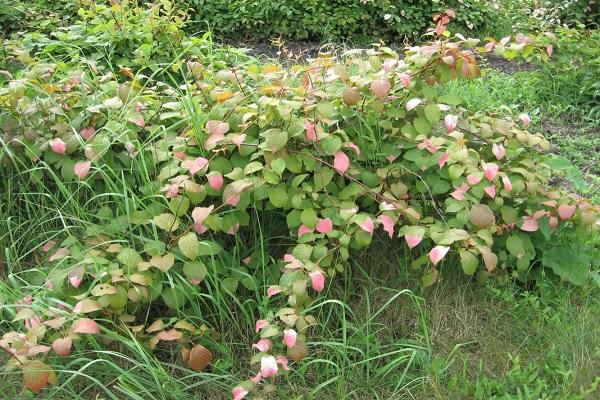

The most common varieties
The climate of the Moscow region differs from the Asian and Eastern ones, so it is very important here to choose the varieties of plants that are best adapted to it.
Among the most famous varieties of actinidia, the best for the Moscow region, are:
- Arguta;
- Kolomikta;
- Pineapple.
Each of them has certain features, therefore, in order to choose the most optimal one for yourself, you need to have a detailed understanding of them.
Actinidia kolomikta doctor Shimanovsky
It is necessary to dwell separately on the variety of actinidia kolomikta doctor Shimanovsky, since this variety has unique decorative qualities. This variegated species is distinguished by an interesting combination of foliage color; green, pink and white colors coexist on the same plant. In autumn, there are even more colors, yellow covers the purple leaf, and pink is adjacent to red.
Handsomely! In sunny places, the colors of the leaves seem to be even brighter, it is difficult to tear yourself away from this sight. The decor of Shimanovsky's actinidia brings the richness of the colors of the tropics to the garden, and this holiday will continue until winter.
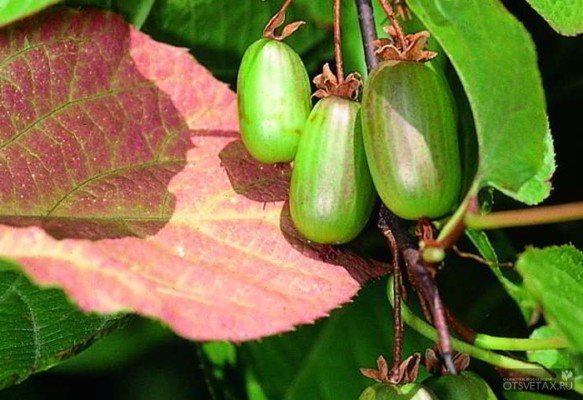

The variety is female, frost-resistant, blooms for about 20 days, the fruits are small green, the taste of the fruits is sweet and sour, pineapple. Its decorative qualities are used more.
Gourmet
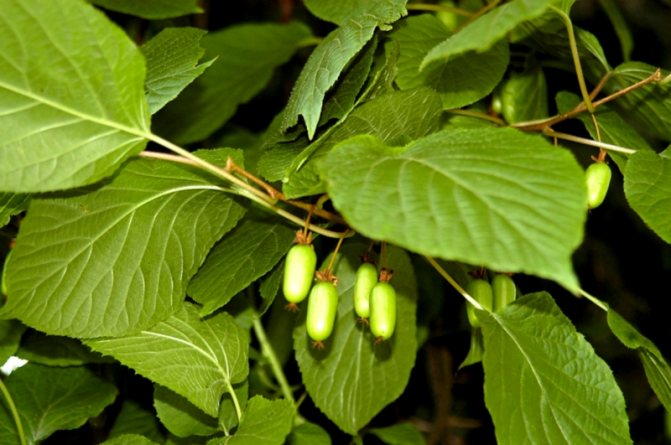

The fruits of this plant species have a small size, about 3 centimeters, and a unique taste. Planting actinidia Gourmet in the Moscow region and caring for it is easier than for other varieties. This variety is well adapted to cold climates, and is also distinguished by its unpretentiousness and high resistance to various diseases and pests, therefore it is very easy to breed a crop. With high-quality watering and feeding, vines can grow up to ten meters in length and give bountiful harvests annually.
For the Moscow region, actinidia of the Kolomikta variety is also well suited, since it can withstand temperatures up to minus 20 degrees. It is thanks to this characteristic that this species is most widespread among Russian gardeners.
Planting seedlings
Planting creepers is carried out as follows:
- two weeks before the landing date say the landing holes.Their size is 50 cm long, 50 cm wide, 60 cm deep;
- drainage from gravel, pebbles, expanded clay with a layer of 10 cm is placed on the bottom of the holes. Then soil is poured from fertile soil and humus, mixed in a 1: 1 ratio. The soil is fertilized with two glasses of ash, one glass of superphosphate, two tablespoons of ammonium nitrate, four tablespoons of potassium salt;
- planting holes are placed at a distance of 1.5-2 m from each other;
- two weeks later, garden soil is poured into the holes in a slide, on which a pre-watered seedling with a lump of earth is placed;
- a shrub 2-3 cm above the root is covered with fertile soil. The soil is compacted. The seedling is well watered;
- the ground around the seedling is mulched with sawdust, leaves or humus, creating a layer of 10-15 cm;
- Before the vine takes root, it needs shading.
Varieties of actinidia
Arguta
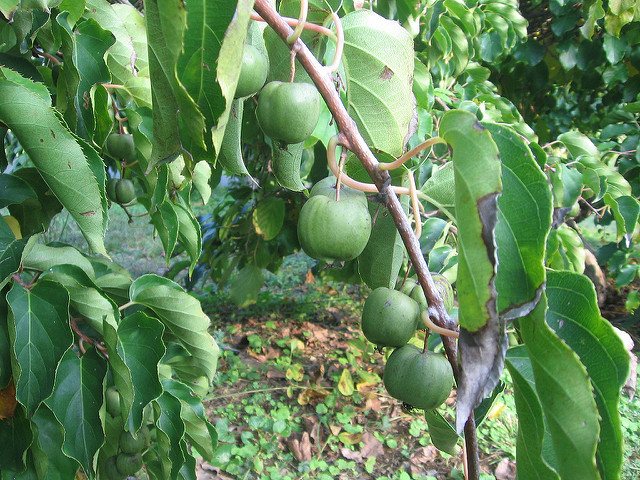

This variety is a hybrid, bred also for regions with a harsh climate, such as, for example, the Moscow region. Planting Argut actinidia and caring for it are procedures that are not much different from similar activities carried out with other varieties. Arguta possesses powerful vines, the length of which can reach thirty meters. The diameter, as a rule, is 15 cm. During the active growing season, buds appear on the stems, collected in inflorescences, which fill the air in the garden with an incredible aroma. The berries are shaped like a dark green ball. They will be ready for harvest in early autumn.
Popular varieties of actinidia
Actinidia Arguta is a dioecious plant, the males and females of which grow separately. Consider the most common varieties of this incredibly beautiful vine.
Pineapple
The high-yielding variety Argut Pineapple grows up to 10 meters in height, effectively wrapping around any supports. During the season it grows up to two meters. It blooms in the month of May with white flowers. Fruits in late October with oval fruits with a characteristic taste. Up to 7 kg of berries per year are harvested from one plant, which are distinguished by good transportability.
Bayern
Actinidia Bayern grows up to 4 meters in height. The plant tolerates frosts well down to -30 ° C. It blooms in May, and in October, oval-shaped berries with a specific sweet and sour taste ripen on the branches. From one bush, under favorable ripening conditions, you can collect up to 13 kg of berries. The berries are firmly attached to the branch and do not fall off for a long time.
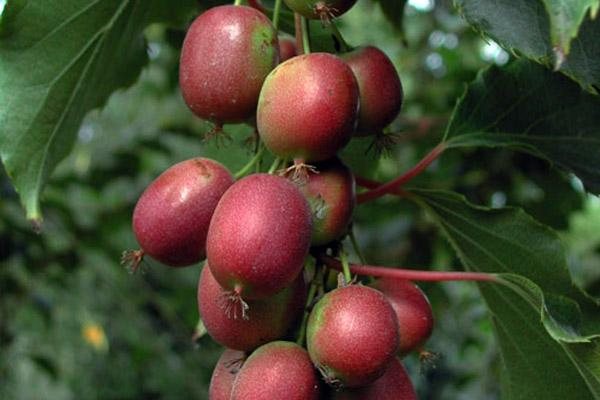

Balsamic
The late-ripening variety Balsamnaya is self-fertile and requires male plants for fertilization. It blooms in June, and at the end of October, large berries of bright green color with a sweet and sour taste ripen on the branches, weighing up to 6 grams.
Weiki
The male plant of the Veiki variety is versatile and suitable for pollination of all Argut actinidia. Blooms in June with small flowers. On female plants, small fruits weighing about 8 grams ripen in early October. Ripe berries stick well to the branches and do not fall off.
Viti Kiwi
Self-pollinated Vitikivi can bear fruit without the participation of other plants. However, a pollinator growing nearby significantly increases its yield. It grows up to 10 meters in height and beautifully braids around the supports. Already in the second year after planting, green oval-shaped fruits with tasty and juicy pulp are harvested from it.
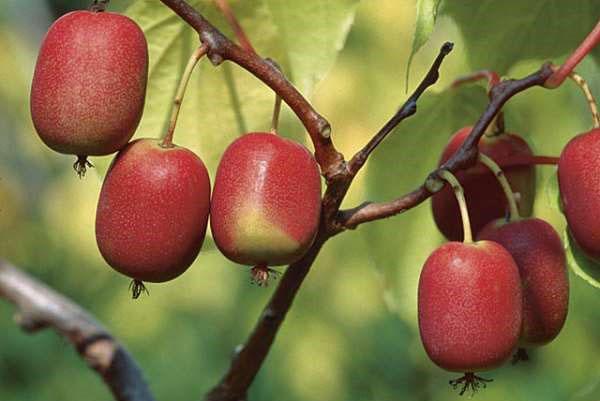

Jumbo
The Jumbo variety tolerates low temperatures down to -28 ° C and grows up to 8 meters in height. It blooms in the month of May, and in the second half of September, elongated fruits with a yellowish color ripen on the branches. The variety is distinguished by its large berry size. Ripe berries do not fall off the branch and are stored for a long time.
See also
Growing and caring for white currants, a description of the best varieties
To read
Giraldi
Self-fertile, powerful liana Giraldi with long stems grows up to 10 meters and beautifully braids the provided supports. Blooms in June. Bears fruit in dark green, apple-pineapple flavor in September.It stands out for its winter hardiness and good quality berries. An adult plant needs strong support.
Geneva
Self-fruitless late-ripening variety Geneva grows up to 30 meters. It blooms with snow-white beautiful flowers, decorated with bright scarlet stamens. At the end of September, a crop ripens on the branches - large barrel-shaped berries. The weight of an individual berry often reaches 8.5 grams. The plant perfectly tolerates prolonged frosts down to –30 ºС, however, it often suffers from recurrent frosts during the flowering period.
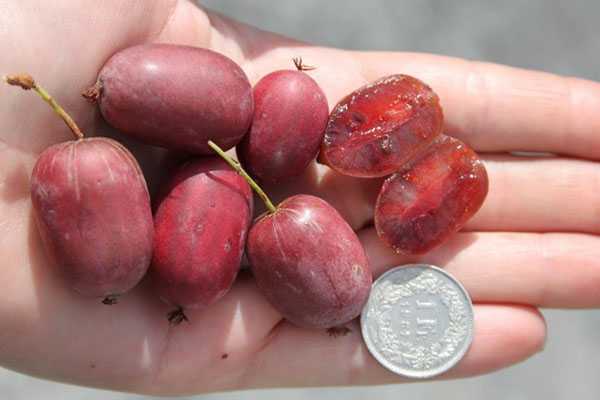

Green balm
The unpretentious Green Balm tolerates temperatures down to –25 ºС and is resistant to fungal infections. Grows up to 10 meters. Fruits at the end of September with large berries with an unusual taste and tender pulp. The weight of one berry is 10 grams. The yield per plant is up to three kilograms.
Golden braid
Vigorous liana Golden braid up to 7 meters high with beautiful leaves blooms at the end of June with white flowers with a greenish tint. In August, it bears fruit with tasty amber-green fruits weighing up to 10 grams. When ripe, the fruits do not crumble. The plant is winter-hardy, withstands frosts down to -40 ° C.
Issei (or Issai)
The self-pollinating variety Issey is distinguished by early fruiting: in the first years after planting, single fruits ripen on the branches. It tolerates frosts well down to -25 ° С, but it is afraid of long dry periods. Fruits at the end of September with sweet fruits, the size of which does not exceed 3 cm.
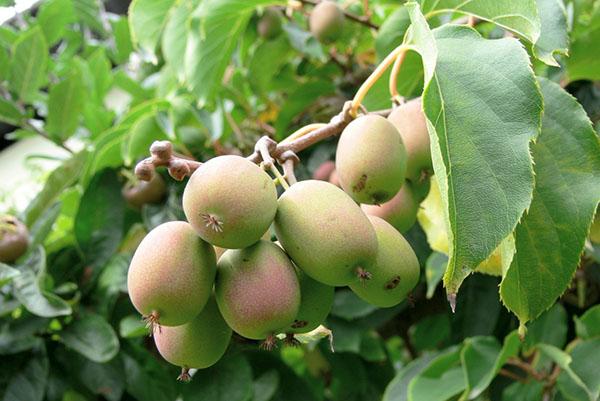

Kens Red
The frost-resistant variety Kens Red easily tolerates temperatures down to -25 ° C. By the end of September, berries up to 4 cm long with very dense flesh ripen on vines. They perfectly tolerate transportation and are stored for a long time.
Kokuwa
The self-pollinated variety Kokuwa produces brown-green fruits in mid-October that adhere well to the branches and do not crumble. Each berry weighs 18 grams.
Lunar
A large Lunnaya liana, in the absence of pruning, grows up to 20 meters. It is a self-pollinating plant on which fruits weighing up to 4 grams with a lemon aroma ripen at the end of September. It reacts poorly to waterlogging and drought.
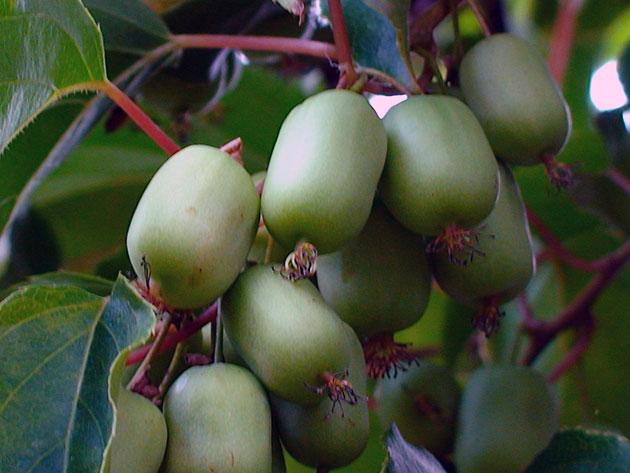

Primorskaya
The vigorous Arguta Primorskaya bush of late ripening is endowed with ovoid leaves with a yellow-green color. After flowering with a beautiful white color, yellow-green berries ripen on the plant, sweet and sour in taste with a specific apple aroma. The mass of the berries is 5.9 grams.
Purple garden
The length of the purple garden creeper reaches 5 meters. The plant tolerates frosts well down to –25 ºС. The berries are endowed with a specific shape and ripen in early October. Their average weight is 6 grams. Ripe berry sticks well to the branches and does not crumble when overripe.
September
The length of Arguta Oktyabrskaya reaches up to 7 meters. The plant is characterized by increased winter hardiness and survives frosts well down to –40 ºС. Fruits in emerald-colored berries with characteristic dark stripes. The average berry size is 2 cm.
See also
Description and subtleties of growing Spartan blueberries
To read
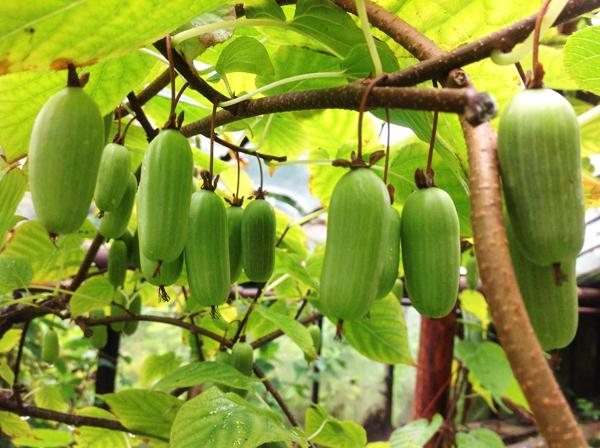

Taiga emerald
Self-infertile actinidia Taiga emerald grows no higher than 4 meters. Fruits in September with dark green cylindrical berries. The berries are characterized by a sweet and sour taste. Each of them weighs 4 grams.
Relay race
The Relay variety is distinguished by large fruits with an olive-green color, which ripen in mid-September. Each berry weighs 17.2 grams. The delicate plant is often damaged by frost.
Plant care
Any cultures of the lianas family are unpretentious, so it is not too difficult to breed and maintain them at home. The main thing is to provide the plants with timely and abundant watering. In addition, so that the yield does not decrease, it is necessary to carry out sanitary rejuvenation every autumn.If you live in a region with a very harsh climate, then every winter actinidia will have to be covered with peat. Approximately 10 years after planting, the vines do not need to be insulated, since they will be able to winter normally.
The right time to disembark
Note. Actinidia is planted in the spring, but it is permissible to carry out planting work in the fall, 2 weeks before the cold snap.
Important! The slightest deformation of the root system should be avoided, since the plant is not always able to endure even a 10-minute exposure to air with open roots.
The best option would be to transplant a mature seedling from a container. The age of the planting material should not exceed 3 years.
Note. It is not recommended to plant the plant in hot weather.
When planting, a distance of approximately 3 meters should be observed.
The germination of the root system of the actinidia creeper is carried out in the horizontal direction. The shallow planting pit should be well drained to avoid fluid stagnation. For the manufacture of drainage, you can use the following materials:
Step-by-step instructions for planting work:
- 2 weeks before disembarkation, create a 50 cm depression with a diameter of 44 cm;
- Set aside the topsoil;
- Lay drainage with a 10 cm layer;
- Mix the top layer with a bucket of humus;
- Fill the pit with a bucket of water;
- Wait for the soil to settle;
- Water the seedling in a container;
- Remove the seedling, avoiding deformation of the root system;
- Fill a small hill from clean soil;
- Install a seedling;
- Cover with planting mixture;
- Water the plant;
- Mulch the ground;
- Protect the plant from pets;
- Create shadow conditions for 2 weeks.
Note! It is unacceptable to introduce fresh mullein and lime into the planting pits.
What do gardeners say about culture?
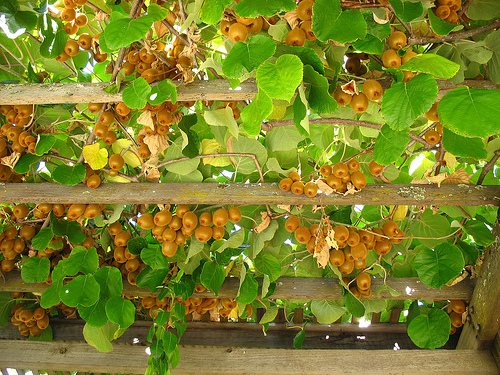

So, what can you learn about this culture from the reviews? Actinidia (planting in the Moscow region and caring for this culture were described in detail in the article) multiplies very easily and retains its characteristics for 30 years. It is practically not susceptible to any viral and fungal diseases, and is also rarely attacked by harmful insects, so you do not have to spend a lot of time and effort in caring for it. Therefore, even if you are a beginner gardener, you can safely plant actinidia on your land. These vines will not only become an excellent decoration for the garden, but will also produce incredibly tasty and healthy fruits every year.
How to get a big harvest?
Liana needs to be placed correctly. It needs a lot of space, so it is better to grow it on an insulated balcony. Also organize a support along which the plant will climb, or make a beautiful and original balcony frame out of it. The length of one liana, by the way, can reach seven meters.
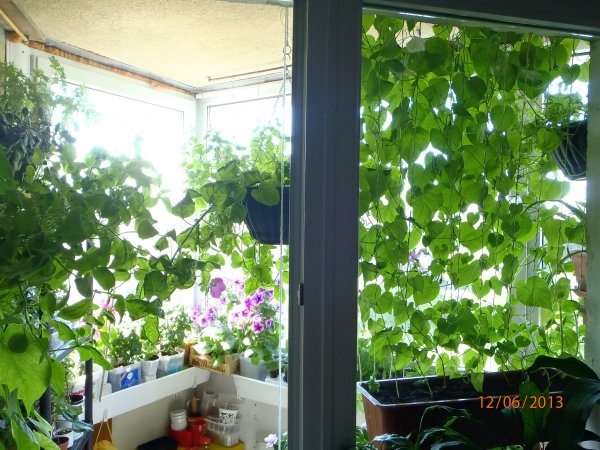

Note! Pollination should be taken care of to obtain fruit. In natural conditions, insects are engaged in this, in our case, you must do everything with your own hands.
If there are too many male vines, you can plant "eyes" from female vines on them, which will allow you to get fruits. Ideally, five or six females should fall on a male plant, and if the proportions are not correct, then it is better to vaccinate. The “eyes” take root well, thanks to which the yield will increase markedly.
Video - Kiwi inoculation
Also, periodically inspect the kiwi leaves, and for two reasons at once.
- This will allow you to detect the fungus in time and clean the leaves.
- Liana can be "infected" by various pests from neighboring plants, so in addition to inspection, try to place kiwi as far away from them as possible.
With the onset of autumn, cut off old shoots: those branches that have already borne fruit are recommended to be removed. This will free up space for new shoots, and the vine itself will not age and will bear fruit for many years.
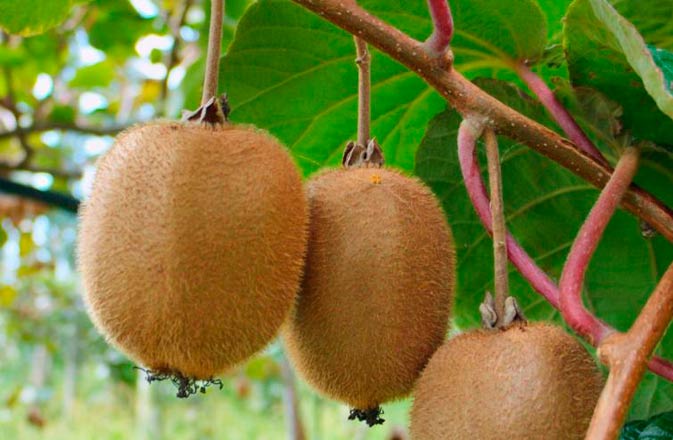

If the vine grows on the balcony, then in winter you will have to additionally protect it from frost. To do this, remove the shoots after scrapping and wrap them up. When spring comes, they will sprout more young shoots.
And in conclusion - one more useful advice. For some reason, cats love the branches and foliage of kiwi, so if you have such a pet, then take care of protecting the plant - you can, for example, enclose it with a net. Otherwise, the kiwi may die.
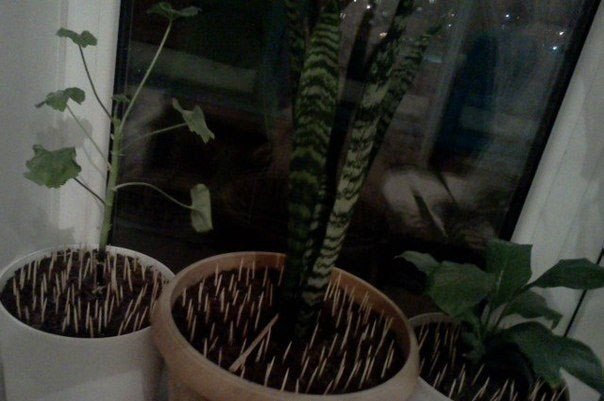

How to wean a cat from walking according to flowers? Ordinary toothpicks will help you.
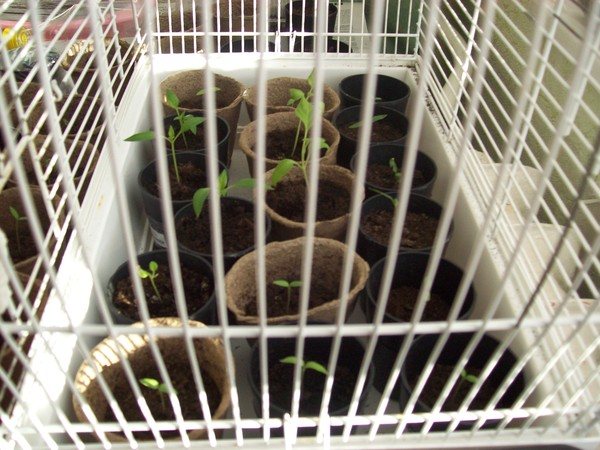

Seedlings in a cage
Video - Features of growing kiwi
Features of preparing actinidia for winter - general tips and tricks
Whether the autumn care of actinidia is carried out correctly depends on whether the area will be decorated with openwork weaving of thin stems. To protect actinidia from its inherent diseases and prepare the plant for the arrival of cold weather, you need to perform the following steps.
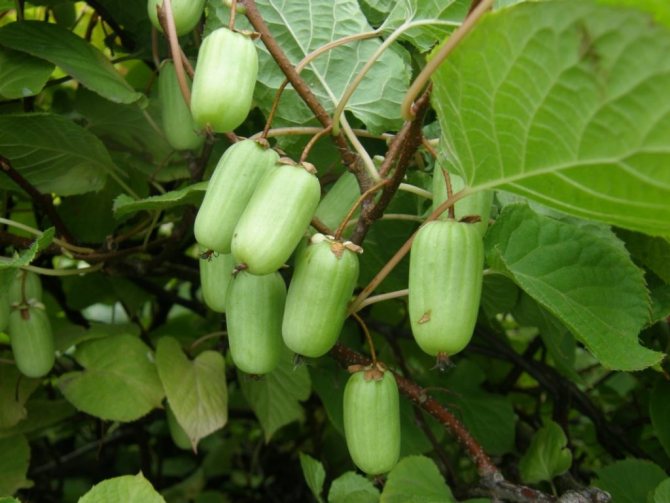

Watering. It is necessary to moisturize the climbing plant only in case of a long absence of rain. About 6-8 buckets of water are poured under the root of one plant.
Top dressing. In the fall, organic matter or phosphorus-potassium fertilizers are applied under an exotic liana, and then the trunk circle is dug shallowly. For fertilization per 1 square meter, it will be enough to embed in the soil 2-3 kg of rotted mullein or horse manure, 50 g of superphosphate, 15 g of potassium salt.
When to prune actinidia
The best time to prune actinidia is late autumn after leaf fall, in preparation for winter. Or early spring, before the start of sap flow in April. Delay, pruning during the growing season, even in April, threatens with the outflow of juice: the cuts are extremely poorly tightened, and smearing will not help. Often, “crying” becomes the cause of the death of the vine.
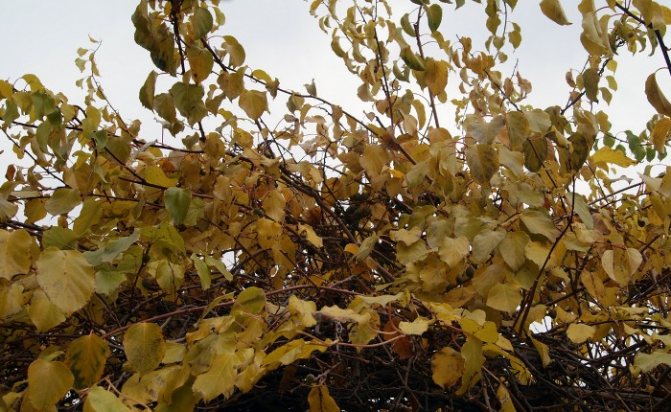

Timing of pruning actinidia in the fall and preparation for winter: when to prune and how to ration.
Timing of pruning in the fall - at night temperatures below zero, after leaf fall. Depending on the climatic zone, this is October or November.
Soil for the above plant
Actinidia seedlings prefer a variety of soils, with the exception of floating clay soils, near which groundwater is located. Breeders recommend making good drainage for the plant. Therefore, tree-like lianas are best placed on slopes with water runoff, in elevated areas. This will prevent stagnation of water in the roots of the plant.
Intensive growth of actinidia is noted on acidic and slightly acidic soils fertilized with organic mixtures. But in no case should they contain lime. The plant does not tolerate this feeding. Also, it is not recommended to add calcium chloride under actinidium.
It should be noted that it is strictly forbidden to plant actinidia after actinidia. An undesirable neighbor for the above plant is the apple tree. Better to plant actinidia near black currants.
In no case is it allowed to dig the soil around the tree-like liana. The maximum that can be done is to carry out shallow loosening.
How to choose quality seed and cuttings
- The seeds are harvested in late autumn. Placed in water and incubated for 5 days. Water is renewed daily.
- Then it is wrapped in a wet cloth and buried in the sand. In a humid environment, they are kept for two months. Temperature +20 ° С.
- Weekly take out, ventilate the seeds and moisten the fabric.
- A box with sand and buried seeds is buried in the snow for 2 months. After that, they are transferred to the room, the temperature is maintained at +12 ° C.
- You will have to wait another month before germination. After that, they are transplanted into soil and grown in a room.
- When the second pair of leaves appears, you can plant it in a permanent place.
Cuttings should not be damaged, should not be dry.
Reviews of actinidia
Nastya Kolomkina - Dr. Shimanovsky planted actinidia, I like it very much, multi-colored, bright saturated colors.But, alas, it was not possible to grow it, in the spring the cats ate a young sprout, and then dug the root and chewed it all up. It’s a pity.
Valentina Stepina - The neighbors on the site have such a gorgeous actinidia bush growing, it's a feast for the eyes, but I can't breed it. It will freeze, then the cats will eat it. I do not know what to do. Please advise!
Ivan Lebedinsky - I have been doing actinidia for many years, collecting an excellent harvest from it. She never froze to me, although I live in the suburbs. You need to be more careful and not be lazy to lower the vines in the fall. They will go under the snow and no frost is terrible. Grow a very tasty and valuable berry for her, just a treasure of vitamins.
Care in the conditions of the Moscow region and central Russia
Different species require approximately the same care during the growing season.
Watering
Actinidia does not tolerate drying out of the soil at all, and it does not like dry air. To its excessive dryness, it can respond by dropping leaves, which is fraught with freezing of young, immature shoots in winter.
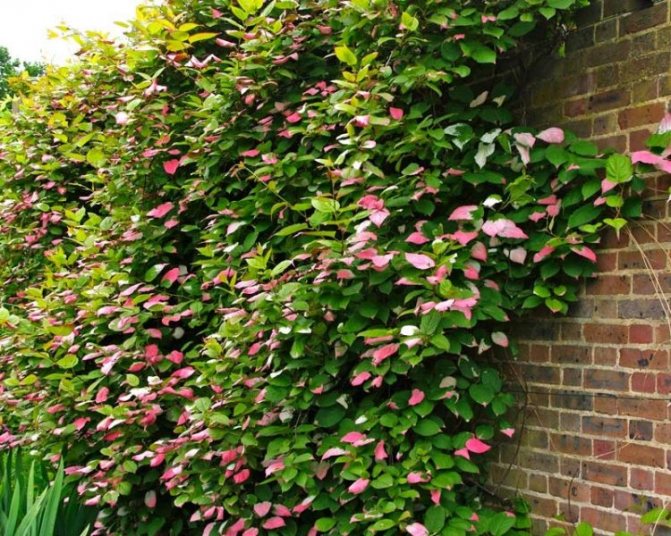

Actinidia is watered weekly, up to 6 buckets of water are poured under each adult bush. Thorough mulching will help to make watering less often. Actinidia will be grateful if ground cover annual flowers, or even better plants from the legume family, are planted under it.
Spraying plants in the morning and evening is a necessary procedure, especially in hot weather.
Top dressing
For the whole season, you will need 3 dressings:
- in early spring for every square meter. 20 g of potash and phosphorus fertilizers and 35 g of nitrogen fertilizers are applied;
- after the formation of ovaries, 10 g of potash and phosphorus fertilizers and 15 g of nitrogen fertilizers will be required for the same area;
- in mid-September, 20 g of potash and phosphorus fertilizers are applied.
Fertilizers are applied dry, carefully sealed to a depth of about 7 cm - actinidia does not like deep loosening. Fertilized plants need to be watered. Once every couple of years in the fall, about a bucket of humus is poured under the bush.
Forum discussion
Actinidia berries contain a large supply of vitamins, in this it is only slightly inferior to rose hips, and even then not all varieties. The plant is so beautiful, useful and unpretentious to care for.
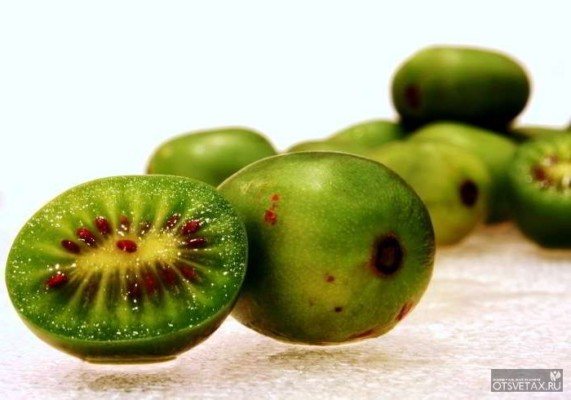

All that is needed is good watering, feeding during growth, and the fight against the eternal enemy of cultivated plants, weeds.
Read it! On one of the forums there is a work by Stefan Fedorovich Nedyalkov ("Household economy" for 1990). He very interestingly shares in the article "A handful of berries - vitamins for a year", about how he grows actinidia. How it replenishes the stock of seedlings, in what ways.
He talks in detail about growing seedlings from seeds, shares the secret of how to prepare delicious juice from the fruits of actinidia and lemongrass.
Growing problems
As with growing any fruit crop, gardeners are faced with some problems that are easy to solve.
Diseases and pests
Pests are treated with insecticides. It is affected by the leaf beetle, bark beetle.
- leaf spot;
- fungal diseases.
For prevention, they are treated with fungicides.
Does not grow or bear fruit
The reason for the lack of fruits is the male sex of the culture:
- The plant is dioecious. They are divided into female with pistillate flowers and male with staminate flowers. Sex does not change throughout life.
- After flowering, the males fall off. Female flowers form fruits, but only under the condition of pollination, which occurs with the help of insects and air currents.
- Lianas of different sexes are planted nearby. For 2 men - 5 women.
The reasons for the lack of growth:
- The seedlings planted in the fall will not be able to take root well. As a result, in the spring they will begin to wither and die completely. It is necessary to plant only in the spring.
- In a very dark place, the plant will not want to fully develop and will lag behind in growth, so it is necessary to transplant it to a well-lit area.
- An apple tree planted nearby inhibits crop growth.
- Stagnant water can cause rotting of the root system, which will significantly affect the condition of the vine and can lead to death.
- This may be due to cats who like to feast on the plant. With constant digging in the roots, the vine slows down growth and as a result may die.
- Young trees poorly insulated for the winter can freeze slightly. This will badly affect their condition. For some time, the vine will lag behind in growth. If the root system is not completely frozen, growth will resume on its own after a while.
- In very hot summers, in the absence of proper watering, the plant can slow down its growth. If you do not urgently correct the situation, the vine will drop all the foliage. The soil must be constantly moist. To reduce the amount of watering, the land around the plants is mulched.
To improve growth, it is recommended to plant hazel and currant. Plants nourish the vine, thereby improving its performance.
Preparatory work
In the early years, actinidia prefers to grow in shaded areas. This must be taken into account when choosing a place and planting it in the ground.
Choosing high-quality planting material
For planting, it is advisable to use container plants with a ready-made root system. They take root well and do not experience stress during transplantation. Seeds do not always retain their maternal characteristics, so it is better to use seedlings propagated by cuttings.
Site selection and preparation
The place for growing actinidia in the country is of great importance. In the early years, it needs good shading. Planting seedlings along a fence or wall is ideal.
Such an obstacle will create the necessary shade and become a reliable support for the growing climbing plant.
Actinidia needs a large planting pit, the dimensions of which are at least 50x50.
A thick drainage layer is laid on the bottom of the pit. The plant requires fertile soil, so the earth dug out of the pit is mixed with humus, a sod layer, superphosphate and vermiculite are added. Heavy soils are diluted with sand.
About pruning actinidia: why is it done
Why do you need pruning? For the formation, regulation, prevention of freezing. We will form the bush itself, depending on the type - by the bush method, or on a horizontal trellis.
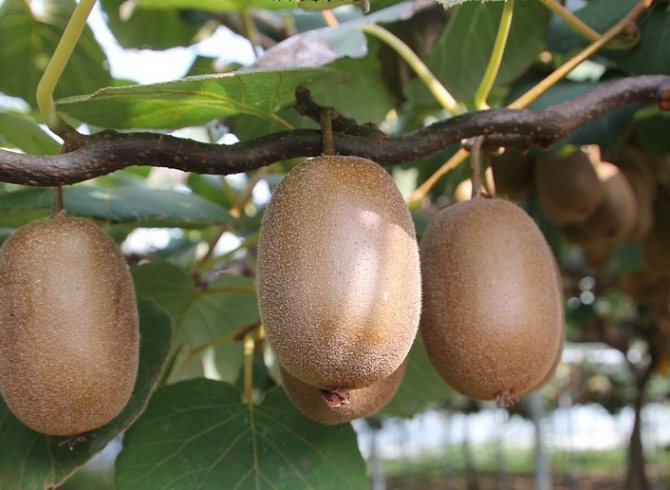

Formation, rationing and pruning of actinidia is the mother of productivity and the guarantee of the health of the vine. We cut it off correctly.
We will normalize both the density of the bush and the yield: overloading with berries is fraught with a decrease in the viability of the bush, poor maturation of wood, low yield for the next year - and simply weakening of the plant. In addition, unripe shoots are frozen - this is part of preparing the actinidia for winter.
And the purpose of pruning is to rejuvenate the bush. And lightening: the shoots of actinidia should be located freely, not shading each other for good illumination so that diffused light passes through.
In dense shade, plants shed their foliage, and young shoots form in the upper part of the crown - closer to the light. Thus, the bush is exposed from below, takes the form of a trunk.
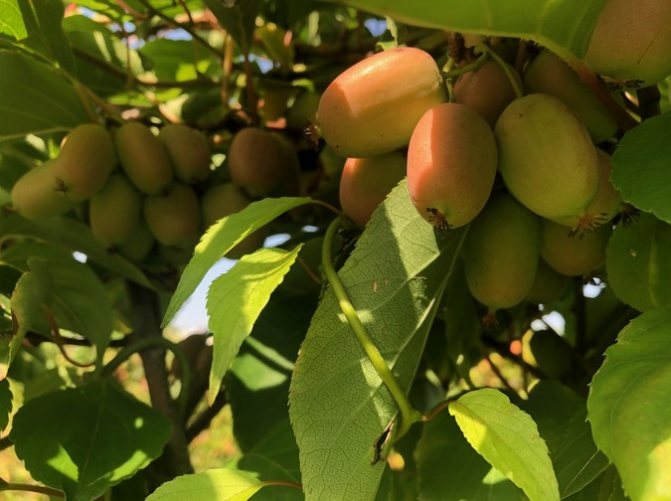

How to prune actinidia, which is a mini-kiwi and just a kiwi: tips and secrets.
If the seedlings of autumn planting have moved into growth, threatening freezing, pinch their tops to stop growth.
If they are frozen in winter, you should not be upset: dormant buds will wake up in their lower part, giving rise to new shoots in the spring.
Possible mistakes
Gardeners do not always perform the preparatory work correctly. This leads to damage or death of the vine. The main mistakes are:
- Performing autumn pruning according to the same pattern for all varieties. This leads to a deterioration in yield or a complete lack of fruit. The plant stops growing or dies completely.
- Closing the vine too early, as well as doing the work late, causes the death of the plant.
- Pruning during sap flow leads to the fact that the damage does not heal for a long time and the vine dies.
Suitable varieties for growing and their features
Kiwi lovers need to plant winter-hardy actinidia on their site, since the fruit grows on Chinese actinidia, which is not intended for our latitudes.
But there are better types of plants suitable for cold climates, which will delight with similar fruits.
Kolomikta
- withstands cold up to -45 ° С;
- sensitive to spring frosts;
- plant height maximum 5 meters;
- trunk 10 centimeters thick;
- the shoots of the plant are brownish-red;
- flowers are small, have a spicy aroma, reminiscent of a mixture of lily of the valley and lemon;
- the plant blooms in the last decade of May;
- upon reaching technical maturity, the fruits fall off.
Sharp or argument
- reaches a height of 15 meters;
- withstands frost -40 ° С;
- the diameter of the leaves of the plant is 3 centimeters, they do not have a smell;
- the maximum yield is 15 kilograms;
- when technical maturity is reached, the fruits do not crumble.
Polygamous
- height 5 meters;
- shoots are light, brown in color;
- the plant can withstand -35 ° С;
- recovers well after freezing;
- the fruit resembles a mixture of sweet peppers and figs;
- leaves 15 centimeters long.
Giralda
- stems are long - 10 meters;
- the plant blooms in early June;
- ripening of fruits in September;
- harvest - 5 kilograms;
- withstands -25 ° С;
In severe winters, it requires shelter.
Description of culture
Actinidia is a thermophilic tree-like perennial plant of the Actinidia family. Its main decorative component is graceful, thin shoots and leaves of a heart-shaped configuration. During the summer period, they change their hue from white-green to pink-crimson. Such an unusual color allows you to actively use the culture for decoration:
After flowering, juicy, sweet fruits are formed, they are somewhat reminiscent of gooseberries in shape.
Since the shrub requires a lot of heat, it must be properly prepared for the upcoming winter. The process is carried out taking into account the type of vine that was planted. Usually this is Actinidia Kolomikta, because this is the most winter-hardy crop variety that can calmly withstand a temperature drop of up to 35 degrees below zero.
Actinidia Poligama and Arguta are less common, since they can freeze slightly without additional plant preparation. It includes:
- pruning;
- shelter of the ground part of the vine and its root system.

